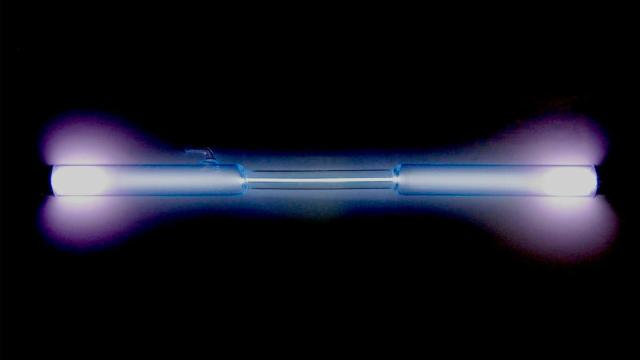This past week, scientists announced that they’d made an incredible physics observation using a vat of liquid xenon. It’s officially the rarest nuclear decay — and really, the rarest event of any kind — ever directly measured.
How rare? As I wrote in my previous article about the result, “the average amount of time it would take half of the xenon atoms in a sample to undergo this reaction is 1.8 x 1022 years… That’s roughly a trillion times the age of the universe.”
My ears figuratively started leaking brain juice attempting to fathom this, so I thought I’d try to break down how it’s possible for scientists to measure such a rare event.
To recap: This week, researchers working on the XENON1T experiment announced that they’d made a groundbreaking observation of a kind of nuclear decay called two-neutrino double electron capture. Essentially, a pair of protons in the atom’s nucleus each spontaneously absorb one of the atom’s electrons at the same time. This results in the release of a pair of neutrinos and X-rays.
Physicists have theorised the existence of this nuclear decay since 1955, and are most interested in it because it’s a stepping stone toward more interesting physics results.
Another kind of event, electron capture without neutrinos (when pair of the atom’s neutrons spontaneously emit electrons and neutrinos but the neutrinos go missing, annihilating one another into gamma rays), could reveal profound truths about the nature of the mysterious neutrino, the second-most abundant particle in the universe.
But let’s get back to the bit about 1.8 x 1022 years. How is it possible to directly measure an event that you’d seemingly have to wait until long after all the stars burn out to experience? Well, thankfully, that isn’t really how half-lives work.
The concept of a half-life essentially says that if you have a batch of atoms, the half-life is the amount of time it will take for half of the atoms to undergo the nuclear decay you’re studying. The more atoms you have, the more likely you are to see the nuclear decay you’re searching for.
The XENON1T experiment involves 3500kg of liquid xenon buried deep underground in a mountain in Italy. Its primary goal is to measure dark matter particles interacting with the atoms (something it has not yet managed to do).
But of the 3500kg, approximately 2kg are a flavour of xenon that can undergo this two-neutrino double electron capture event, an isotope called xenon-124 (because the number of protons and neutrons in its nucleus is 124), study author Christian Wittweg, PhD student at the University of Münster in Germany, told Gizmodo.
A quick estimate using high school chemistry would say that’s equal to around 1025 xenon-124 atoms. If it takes 1.8 x 1022 years for half of those xenon atoms to decay, then in one year, a few hundred or so will decay (thank you Wolfram Alpha).
And indeed, the scientists reported seeing 126 of the two-neutrino double electron capture events in the vat of liquid xenon.
This is the rarest decay ever directly measured, though scientists have seen indirect evidence of other nuclear decays with even longer half-lives.
But you can imagine where a physicist might want to go from here. Neutrinoless double beta decay and neutrinoless double electron capture would both have longer half-lives, so seeing a reasonable number of those events — which physicists want to do to prove that they exist in the real world and not just in theory — on a reasonable timespan would require even larger vats of atoms.
And indeed, physicists are already working on experiments such as this and hope to continue beefing up existing detectors to hunt for these rare decays.
So, the measurement that the XENON1T experiment made was of one of the rarest nuclear decays ever observed. But when you’re watching a big enough pile of atoms, you have a shot at seeing a one-in-a-sextillion event.
